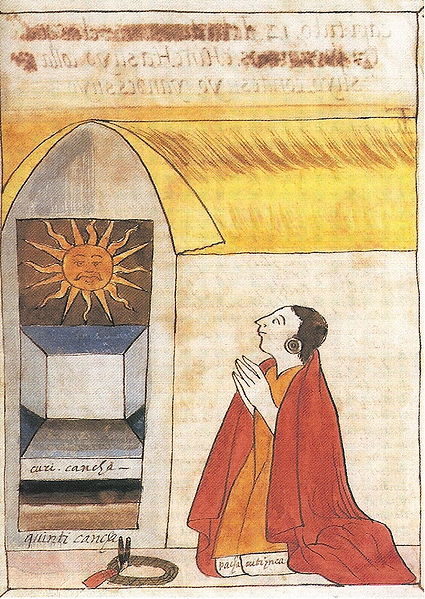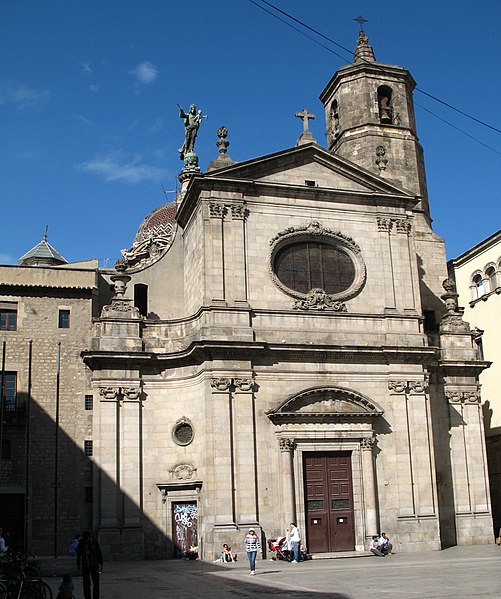Martín de Murúa, O. de M., was a Basque Mercedarian friar and chronicler of the Spanish conquest of the Americas. He is primarily known for his work Historia general del Piru, which is considered the earliest illustrated history of Peru.
Illustration made by Martín de Murúa showing the Sapa Inca Pachakutiq worshipping Inti (sun God) in the Coricancha, in his second chronicle Libro segundo, del gobierno que los Yngas tubieron en este reino y ritos y ceremonias que guardaban. (Second book, of the government that the Incas had in this kingdom and rites and ceremonies that they kept.), manuscript completed in 1613.
Drawing (ca. 1615) by Guamán Poma de Ayala depicting the friar Morúa beating a native worker. The superimposed legend says: FRAILE MERZENARIO MORVA. son tan bravos y justicieros y mal trata a los yndios y haze trauajar con un palo en este reyno en las dotrinas no ay rremedio. (MERCENARIAN FRIAR MORÚA. are so brave and righteous (righteous or avengers) and he mistreat the Indians and he make them work with a stick in this kingdom in the doctrines there is no remedy.),
Order of the Blessed Virgin Mary of Mercy
The Royal, Celestial and Military Order of Our Lady of Mercy and the Redemption of the Captives, also known as the Mercedarians, is a Catholic mendicant order established in 1218 by Peter Nolasco in the city of Barcelona, at that time the capital of the Principality of Catalonia, part of the Crown of Aragon, for the redemption of Christian captives. Its members are most commonly known as Mercedarian friars or nuns. One of the distinguishing marks of the Order of the Blessed Virgin Mary of Mercy is that, since its foundation, its members are required to take a fourth vow: to die, if necessary, for another who is in danger of losing their faith. The Order exists today in 17 countries.
Our Lady of Mercy - From the Generalate of the Mercedarian Order
Peter Nolasco (1189-1256)
La Mercè basilica in Barcelona where the Mercedarian mother church, current building built between 1765 and 1775.
Convento de la Merced, founded in 1607, is a Merecedarian convent, which now serves as a church, in the small town of Valdunquillo, in northern Castile.






